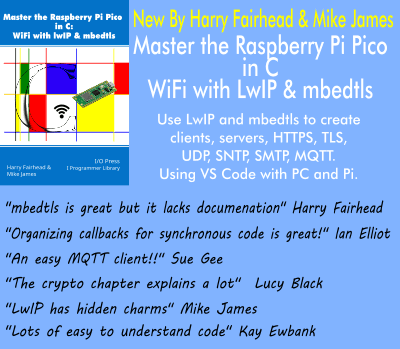| Micro:bit Commando Jump Using MakeCode |
| Written by Sue Gee | |||||||||||
| Monday, 09 April 2018 | |||||||||||
Page 4 of 4
ConclusionThere are plenty of opportunities for improving the game - put the play code inside another loop so that the player can have multiple goes, add some sound, add a scoring system that take time into account, and so on. All of these improvements are possible, but without subroutines or functions the size of the block program gets bigger and bigger and eventually so big it is unwieldy. What does this game implementation tell us about the MakeCode Block Editor? The verdict has to be that it is really only suitable for smallish programs. The problem is that the code that it produces is Microsoft's TypeScript, which isn't quite JavaScript and clearly has a Microsoft bias. There is also the problem that the code isn't the simplest you can imagine for presenting to a beginner. Comparing it with microPython you have to admit that it might not be much harder to introduce the beginner to this Python dialect. It is surprising that, after so much time, we are still presenting teaching languages to complete beginners that are not easy to use. The ListingRather than give a complete block form of the program, it seems more useful to give the JavaScript version. If you want to you can copy and paste this into the JavaScript editor and switch to block view to see a complete block representation. The complete program is:
More InformationRelated ArticlesCommando Jump Game For The Micro:bit In Python Micro:bit Commando Jump In The Microsoft Block Editor Commando Jump Game For The Micro:bit In Touch Develop Getting Started With C/C++ On The Micro:bit Offline C/C++ Development With The Micro:bit BBC Micro:Bit Finally Ships to 1 Million For Free BBC micro:bit Your Next Computer? BBC Giving Away 1 Million Microcomputers Teach Code In School - Before It's Too Late! Four Generations - Video of BBC Micro
To be informed about new articles on I Programmer, sign up for our weekly newsletter, subscribe to the RSS feed and follow us on Twitter, Facebook or Linkedin.
Comments
or email your comment to: comments@i-programmer.info <ASIN:1871962455> |
|||||||||||
| Last Updated ( Friday, 18 May 2018 ) |
